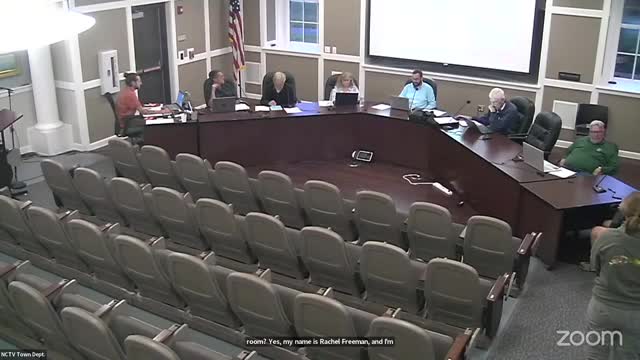Nantucket plans new beach access amid coastal erosion crisis
August 09, 2024 | Nantucket County, Massachusetts
This article was created by AI summarizing key points discussed. AI makes mistakes, so for full details and context, please refer to the video of the full meeting. Please report any errors so we can fix them. Report an error »

During a recent government meeting, officials discussed several significant environmental projects aimed at enhancing public access to local beaches and addressing erosion issues.
The first item on the agenda involved a notice of intent application for the installation of a set of aluminum stairs at Stones Beach, located at 45 Nonantum Avenue. The existing wooden stairway has become increasingly difficult to navigate due to severe erosion of the coastal dune, prompting the need for a second set of stairs to improve public access. The proposed stairs would be situated within a coastal storm flowage area and a coastal dune, with no waivers required for the project. The commission unanimously approved the motion to close the public hearing on this application.
Next, the Nantucket Islands Land Bank presented a proposal for Madakasham Beach, where they aim to facilitate public access by mowing an existing path and installing a post and rope fence. This project has faced delays due to extensive reviews by the natural heritage and endangered species program, particularly concerning the habitat of the piping plover. The plan includes restoring sandy areas with American beachgrass to stabilize the shoreline and maintain nesting areas for the plovers. The commission also closed the public hearing on this matter without opposition.
Another critical discussion centered on a septic repair project at 17 Sacuje Road, where a failing leach pit has caused sewage seepage along a coastal bank. The proposed solution involves replacing the existing system with a denitrification system and relocating the well to ensure proper separation from the leaching trench. The project will require the removal of three mature trees, which will be replaced with native shrubs, and plans for revegetation post-construction were outlined. The commission approved the motion to close the public hearing on this application as well.
Lastly, the Nantucket Islands Land Bank sought to continue invasive species management at Khonsu Springs, an area previously designated for restoration. The project aims to control invasive species such as phragmites and Japanese knotweed in the salt marsh and bordering vegetated wetlands. The commission acknowledged the importance of this ongoing management effort.
Overall, the meeting highlighted the commitment of local officials to enhance public access to natural resources while addressing environmental challenges through careful planning and community engagement.
The first item on the agenda involved a notice of intent application for the installation of a set of aluminum stairs at Stones Beach, located at 45 Nonantum Avenue. The existing wooden stairway has become increasingly difficult to navigate due to severe erosion of the coastal dune, prompting the need for a second set of stairs to improve public access. The proposed stairs would be situated within a coastal storm flowage area and a coastal dune, with no waivers required for the project. The commission unanimously approved the motion to close the public hearing on this application.
Next, the Nantucket Islands Land Bank presented a proposal for Madakasham Beach, where they aim to facilitate public access by mowing an existing path and installing a post and rope fence. This project has faced delays due to extensive reviews by the natural heritage and endangered species program, particularly concerning the habitat of the piping plover. The plan includes restoring sandy areas with American beachgrass to stabilize the shoreline and maintain nesting areas for the plovers. The commission also closed the public hearing on this matter without opposition.
Another critical discussion centered on a septic repair project at 17 Sacuje Road, where a failing leach pit has caused sewage seepage along a coastal bank. The proposed solution involves replacing the existing system with a denitrification system and relocating the well to ensure proper separation from the leaching trench. The project will require the removal of three mature trees, which will be replaced with native shrubs, and plans for revegetation post-construction were outlined. The commission approved the motion to close the public hearing on this application as well.
Lastly, the Nantucket Islands Land Bank sought to continue invasive species management at Khonsu Springs, an area previously designated for restoration. The project aims to control invasive species such as phragmites and Japanese knotweed in the salt marsh and bordering vegetated wetlands. The commission acknowledged the importance of this ongoing management effort.
Overall, the meeting highlighted the commitment of local officials to enhance public access to natural resources while addressing environmental challenges through careful planning and community engagement.
View full meeting
This article is based on a recent meeting—watch the full video and explore the complete transcript for deeper insights into the discussion.
View full meeting
